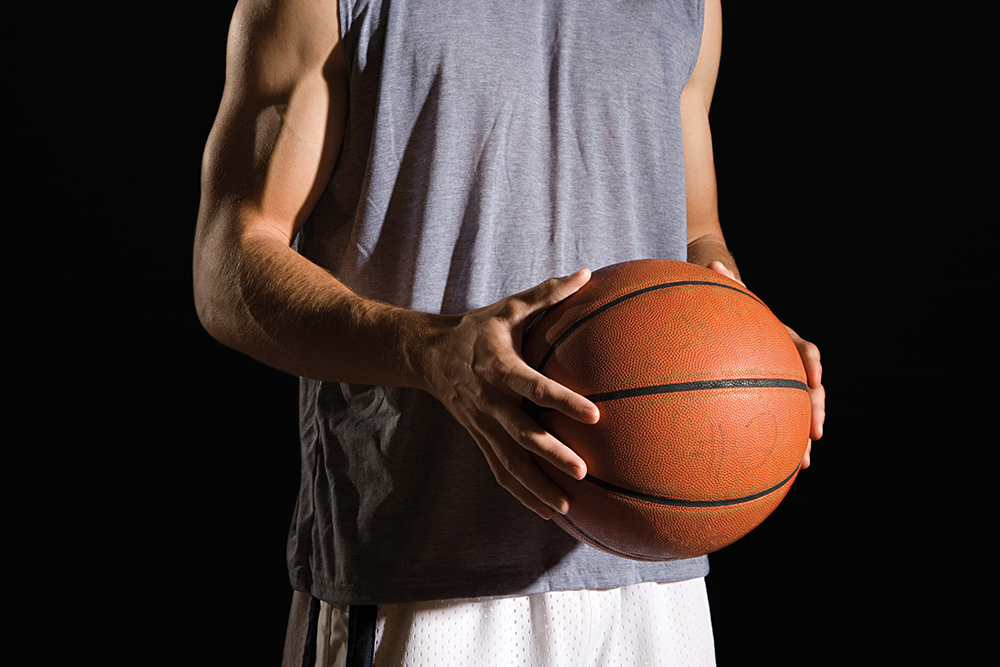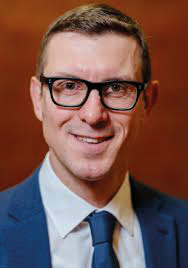Professor Matthias Weigelt – The Psychology and Ethics of Maximising Performance in Competitive Sports
In sporting performance, developing a competitive edge over opponents is essential. Professor Matthias Weigelt at the University of Paderborn, Germany, specialises in the application of psychological theory and methods to the understanding and enhancement of athletic performance. Read on to discover how by taking a cognitive neuroscientific approach to understanding deceptive actions in sports, Professor Weigelt is unravelling the processes underlying expertise in responding to head fakes in basketball with critical ethical implications.
Don’t Believe Everything That You See
In many sports, athletes use disguised or deceptive actions to increase their competitive edge against their opponents. When disguising an action, the athletes attempt to mask all indicators of their planned move, such as a volleyball player hiding for as long as possible whether he/she plays a smash or a lob. The head fake in basketball is a deceptive (or misleading) action, and occurs, for example, when a player passes to the right side, while simultaneously looking to the left side in a bid to hoodwink the other players as to their intended move. Similar manoeuvres can be found by competitors in a range of sports, including football, cricket, rugby, and martial arts.
Research in this field has found that both skilled and unskilled participants can be fooled by deceptive actions. However, novices are more vulnerable to the effects than skilled athletes and suffer greater impairments to performance. For example, expert football players are better able to anticipate the direction of penalty kicks, and expert basketball players are better able to determine whether another player will pass the ball or fakes a pass to a teammate. It has been argued that the greater visual and motor expertise of skilled athletes contribute to their increased anticipation skills and ability to react accordingly.
The embodied cognition literature proposes that observing actions leads to activation of the so-called mirror neuron system in the brain. This simulates the observed actions in the absence of completing that action oneself. Mirroring an observed action in this way is important for understanding the actions of others, predicting the actions of others, and also for inferring the action intentions of others.
The role of expertise in the recognition of deceptive actions and the underlying cognitive processes remain a key focus in both the sports psychology literature and for our understanding of human cognition more generally.

The Importance of Context
Professor Matthias Weigelt at the University of Paderborn, Germany, takes a cognitive neuroscientific perspective in researching deceptive actions in sports. Noting the differences between experts compared to non-expert athletes in their responses to deceptive actions and the experimental evidence suggesting that neither perceptual nor motor expertise can fully explain why experts are better at discriminating deceptive actions than non-experts, Professor Weigelt has sought to understand the role of context, using the head fake in basketball as a paradigmatic example.
Contextual, or situational information, plays an important role in our processing of complex actions. The probability of an opponent conducting a specific action depends on a number of factors, including the current tactic of the team, the game score, and so on. At higher levels of competition, participants will likely know about the preferences and tendencies of their opponents in specific situations and this is also likely to influence their expectations about action outcomes.
Professor Weigelt and colleagues recruited healthy male and female volunteers without specific basketball expertise. They were presented video sequences of trials of basketball players passing the ball to the left or the right side, either with or without performing a head fake, in three experimental head fake- frequency groups (20% fake-frequency, 50% fake-frequency, and 80% fake-frequency). They were instructed to respond to the player’s pass direction as quickly and as accurately as possible, while ignoring the gaze direction of the player. It was of interest under which frequency schedule participants’ reactions to head fakes were slower, signifying a larger head-fake effect.
The head-fake effect was found for all three fake-frequency schedules – that is, participants typically fell for the manipulation of head orientation regardless of the frequency of this. However, the head-fake effect was larger in the 20% fake-frequency group than in the 50% and in the 80% fake-frequency group. This overall pattern indicates that global context played a more important role than local context, which was assessed by analysing participants’ responses in relation to the previous trial they had been presented. When incongruency between trials (i.e., frequency of head fakes) was lower, reactions times were faster and vice versa. In other words, participants’ overall expectations about the frequency of head fakes changed their processing strategy, and not simply what they had viewed in the immediately preceding experimental trial.
Such modulations of the head-fake effect by context may be based on conflict monitoring processes, which happen in the dorsal anterior cingulate cortex (ACC), a brain area which detects conflict in information processing and triggers adjustments in cognitive control by projecting the information to different brain areas, such as the prefrontal cortex, where the conflict will be resolved.
In a neuroscientific investigation, Professor Weigelt and colleagues used electroencephalography (EEG) to examine the neural processes underlying participants’ performance under the different frequency schedules. The EEG signal showed a modulation of the N2 component (a neural signature of conflict detection in the ACC), depending on the frequency schedule. Specifically, the N2-component was strongly pronounced for head fakes during the low frequency schedule (20% fake-frequency), which shows the neural signature of conflict detection in the ACC when the head fake came rather unexpectedly, whereas the N2-component was absent when the head fake was normally expected during the high frequency schedule (80% fake-frequency).
Professor Weigelt and colleagues also found that the head-fake effect is still present after larger amounts of practice and that it occurs independent from explicit instructions to ignore the gaze direction, but they acknowledge that these findings require exploration, and also that replication of these findings in professional athletes would be an important next step.

A Different Story for Experts?
In a later study, Professor Weigelt and colleagues extended this work by comparing the head-fake effect in expert basketball players, football players, and non-athletes. Two potential accounts of the superior performance of expert athletes in overcoming head-fake effects informed this work.
The first account proposed that the accumulation of sustained practice and experience may mean that experienced athletes may be better able to discriminate relevant from irrelevant stimulus features. In other words, experienced athletes have developed the ability to generally suppress conflicting information and are therefore less distracted by the head fake relative to the other information available, such as other bodily movements by their opponent and their knowledge of their opponent’s typical game tactics.
The second account proposed that experienced athletes may have developed greater control over their processing of irrelevant information (such as head orientation in the head fake). By demonstrating greater cognitive flexibility in terms of their focus (or weighting) on various factors and their relevance based on past experience (i.e., their experience of that opponent’s previous behaviour), it may be that expert athletes are less susceptible to head fakes.
As before, participants were presented images of basketball players, who were looking to the left or right, while passing the ball in the same or the opposite direction, and their task was to indicate the pass direction as quickly and as accurately as possible, while ignoring the player’s gaze direction.
Professor Weigelt and colleagues found, once again, seemingly robust evidence for the head-fake effect, and that this was independent of expertise (that is, being an expert basketball player, expert football player, or non-athlete). However, closer inspection of the data indicated some important facets. The head-fake effect disappeared for the basketball experts – but not in football players or non-athletes – when the immediately preceding trial had been a head fake. This suggests that the basketball experts were either able to ignore the irrelevant information from gaze when it had found to be futile in the previous trial, or bolster attention towards more task-relevant information following the presentation of conflicting evidence in the previous trial.
In terms of the two theoretical accounts originally proposed, data from this study could not confirm which one is correct. Furthermore, as Professor Weigelt and colleagues suggest, the two accounts are not mutually exclusive and further research is required to untangle the cognitive processes underlying the effects of expertise on responding to head fakes. However, from a practical perspective, findings provide further evidence for the effectiveness of head fakes as a strategy in basketball, albeit one to be used with caution given that experienced basketball players develop the ability to overcome the effects of head fakes when these are repeated.
The Inside Story
To better understand the cognitive processes underlying responding to head fakes, Professor Weigelt and colleagues conducted a novel neuroscientific investigation. Non-invasive brain stimulation techniques, such as transcranial direct current stimulation (tDCS), temporarily alter neural activity in specific brain regions and in this way, modulate cognitive performance.
An established literature in cognitive neuroscience indicates that interference processing and conflict resolution (such as proposed to be required in responding to head fakes) is specifically associated with left dorsolateral prefrontal cortex activity in the brain.
Professor Weigelt and colleagues recruited healthy, novice basketball players, who underwent a head fake task, based on those used in their earlier studies, but adapted for use with the tDCS method. Anodal tDCS or cathodal tDCS was applied to either activate or deactivate the left dorsolateral prefrontal cortex, respectively. The key finding was that in comparison to cathodal tDCS, anodal tDCS decreased the reaction times to head fake trials.
Theoretically, this finding suggests a key role for the left dorsolateral prefrontal cortex in influencing performance in response to head fakes, consistent with the literature in cognitive neuroscience in which anodal tDCS stimulation has been found to improve performance on several cognitive tasks.
‘Brain Doping’?
This experimental work highlights the possibility of using neuroenhancement techniques, such as tDCS, to increase athletic performance in competitive sports. There are already some examples of the application of this in the sporting arena, including the use of a tDCS intervention to improve the performance of Olympic skiers in the USA.
Professor Weigelt and colleagues argue that the effects of tDCS can be inconsistent and unreliable on an individual basis, which presents a methodological concern in utilising this approach. But more importantly, we are faced with an ethical question – is increasing the performance of athletes using neuroenhancement something we wish to endorse? In addition to advancing our understanding of the cognitive processes underlying sporting expertise, Professor Weigelt and colleagues emphasise the need for critical debate surrounding the ethics of modifying the performance of competitive athletes.
Reference
https://doi.org/10.33548/SCIENTIA421
Meet the researcher

Professor Matthias Weigelt
Department of Sports and Health
University of Paderborn
Paderborn
Germany
Professor Matthias Weigelt studied sport science, social sciences, and psychology at the universities in Jena (Germany), Charlottesville (USA), and Reading (UK). He completed his doctoral program in psychology, neuropsychology, and sport science at the Ludwig-Maximilians-Universität Munich and completed his PhD at the Max Planck Institute for Human Cognitive and Neurosciences in 2004. After completing postdoc positions at the City Hospital in Munich-Bogenhausen and at the University of Bielefeld, he was called to the Saarland University and became a Professor of Sport Psychology in 2010. One year later, Professor Weigelt moved to the University of Paderborn, where he is now the head of the Psychology and Movement Science Group. His well-funded research focuses on both basic and applied topics of human performance in daily activities, clinical settings, and sports. Currently, Professor Weigelt is the Vice President for Research and International Affairs of the German Society of Sport Psychology and one of the editors of the German Journal of Exercise and Sport Research.
CONTACT
E: matthias.weigelt@uni-paderborn.de
W: https://sug.uni-paderborn.de/en/sport/sportpsychologie
KEY COLLABORATORS
Professor José Angelo Barela, University of Rio Claro, Brazil
Professor Wilfried Kunde, University of Würzburg, Germany
Professor Daniel Memmert, German Sports University Cologne, Germany
Professor David A Rosenbaum, University of California at Riverside, USA
Professor Thomas Schack, University of Bielefeld, Germany
FUNDING
German Research Foundation (DFG)
European Research Council (EFRE Framework)
German Academic Exchange Service (DAAD)
FURTHER READING
MA Friehs, I Güldenpenning, C Frings, M Weigelt, Electrify your game! Anodal tDCS increases the resistance to head fakes in basketball, Journal of Cognitive Enhancement, In Press.
I Güldenpenning, C Schütz, M Weigelt, W Kunde, Is the head-fake effect in basketball robust against practice? Analyses of trial-by-trial adaptations, frequency distributions, and mixture effects to evaluate effects of practice, Psychological Research, In Press.
I Güldenpenning, M Alhaj Ahmad Alaboud, W Kunde, M Weigelt, The impact of global and local context information on the processing of deceptive actions in game sports: Both higher head-fake frequencies and head-fake repetitions reduce the size of the head-fake effect in basketball, German Journal of Exercise and Sport Research, 2018, 48(3), 366–375.
I Güldenpenning, W Kunde, M Weigelt, How to trick your opponent: A review article on deceptive actions in interactive sports, Frontiers in Psychology, 2017, 8, 917.
M Weigelt, I Güldenpenning, Y Steggemann-Weinrich, M Alhaj Ahmad Alaboud, W Kunde, W, Control over the processing of the opponent’s gaze direction in basketball experts, Psychonomic Bulletin & Review, 2017, 24(3), 828–834.

Creative Commons Licence
(CC BY 4.0)
This work is licensed under a Creative Commons Attribution 4.0 International License. 
What does this mean?
Share: You can copy and redistribute the material in any medium or format
Adapt: You can change, and build upon the material for any purpose, even commercially.
Credit: You must give appropriate credit, provide a link to the license, and indicate if changes were made.
More articles you may like
Grandmothers: Innovation Through Tradition
Grandmother Project – Change through Culture (GMP) is an organisation dedicated to documenting the role of grandmothers and demonstrating the effectiveness of grandmother-inclusive strategies in improving the health and well-being of women, children, and adolescents. GMP’s groundbreaking work challenges conventional wisdom to transform community-based interventions in Africa and beyond, harnessing a powerful but often overlooked resource: the wisdom and influence of grandmothers.
Dr Robert Larkin | Cultivating Change to Improve Soil Health and Increase Potato Yield
Environmental quality and food production are facing the pressing challenges of climate change and global population growth. Dr Robert Larkin from the United States Department of Agriculture-Agricultural Research Service (USDA-ARS) and a team of plant scientists developed and tested a range of crop management systems to help overcome these compounding challenges. Their work is improving soil health and increasing the yield of potato crops, contributing to the future food security of nations.
Professor Giorgio Buttazzo | Artificial Intelligence and a Crossroads for Humanity
Where do we stand with artificial intelligence? Might machines take over our jobs? Can machines become conscious? Might we be harmed by robots? What is the future of humanity? Professor Giorgio Buttazzo of Scuola Superiore Sant’Anna is an expert in artificial intelligence and neural networks. In a recent publication, he provides considered insights into some of the most pressing questions surrounding artificial intelligence and humanity.
Dr Ralf Adam | New Technologies Shaping the Future of Oral Hygiene
Understanding the efficiency of various toothbrush technologies is essential for achieving optimal oral health. Dr Ralf Adam, who leads a dedicated team at Procter & Gamble in Germany, is keen to investigate the complexities of these technologies. His team have provided new insights into the best toothbrush types for plaque removal and the maintenance of gum health. By highlighting the importance of informed oral care decisions and ongoing investigations, this vital research works towards ensuring everyone can achieve a brighter, healthier smile.




